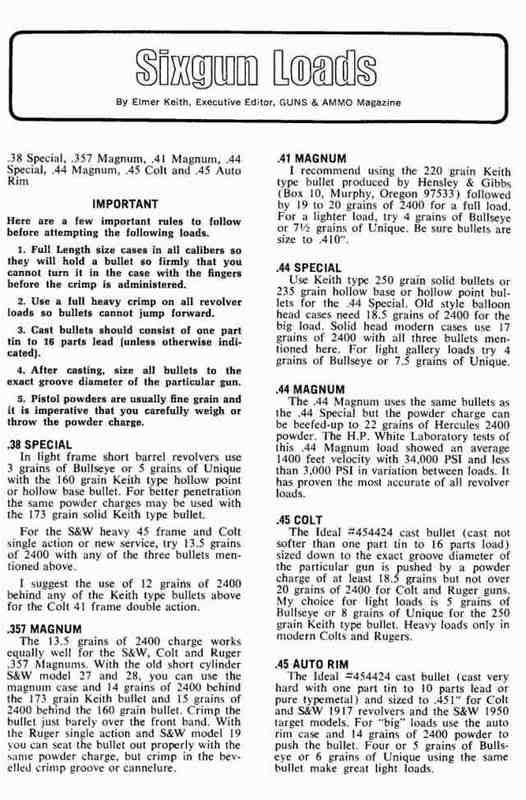Lead alloys
For those that have expressed the interest, here are some lead alloy compositions. I have used this information for years to blend my own alloys for bullets, based upon the intended use.
Wheel weights: 96% lead, 3% antimony, 0.25% tin, trace of arsenic. Brinell Hardness Number (BHN) around 12.
Lyman/Ideal #2 alloy: 90% lead, 5% antimony, 5% tin. BHN 15.
1-to-10 lead/tin alloy: BHN 11.5.
1-to-20 lead/tin alloy: BHN 10.
Linotype metal: 84% lead, 12% antimony, 4% tin. BHN 22.
Monotype metal: 72% lead, 19% antimony, 9% tin. BHN 28.
Stereotype metal: 80% lead, 14% antimony, 6% tin. BHN 23.
About 20 years ago I purchased 200 lbs of linotype metal from a foundry. It used to be fairly common, being used by newspaper publishers to cast and set the type plates for the printing presses. Now that just about every publisher has gone to other printing methods the only reliable source will be foundries.
I have also accumulated about 300 lbs of wheel weights over the years, and continue to do so.
For standard velocity practice ammo in 9mm, .38 Special, .40 S&W, and .45 ACP I use straight wheel weight metal. This works just fine in the 800 to 1000 FPS range.
For magnum handgun loads in .357 and .44 mag I mix 75% wheel weights and 25% Linotype metal for an alloy with BHN approx. 15. This works well up in loads I have used up to around 1400 FPS.
In rifle calibers I use 50% wheel weights and 50% Linotype metal for an alloy with BHN approx. 18, in .30-30, .30-40 Krag, .300 Savage, and .45-70 with gas-check bullets at velocities up to about 2100 FPS. Killed several deer with these in the .30 calibers, and dropped a 3-point bull elk with the .45-70 (500 grain bullet at about 1100 FPS).
I have also loaded pure Linotype bullets (BHN 22) in .30-06 with velocities up to 2500 FPS with gas-check bullets. I would not hesitate to take an 800-lb. elk with these.
The critical factors with cast bullets:
For accuracy, the bullet must drop from the mould no more than 0.001" over groove diameter. The harder alloys do not shrink as much as the softer alloys going from liquidus to solidus, so this can be a factor. Minimal sizing, the less the better, as all sizing damages the bullet to some degree. Good lubricant is a must. Bore must be clean. I regularly shoot 2" groups at 100 yards with cast bullets in good rifles, and I cannot detect any difference in handgun performance between cast and jacketed bullets.
For prevention of leading: proper diameter (no more than 0.001" above groove diameter and NEVER less than groove diameter). Good lubricant is a must (I prefer Alox, but it does smoke and cause an odor which can be a problem at indoor ranges). Clean bore and chambers (residual copper fouling from jacketed bullets tends to cause leading). NEVER exceed the capacity of the bullet alloy being used! Powders in the middle of the burning range are best with plain-base cast bullets. Faster burning powders have a higher flame temperature which can melt the bullet base. Gas checks can extend velocity potential considerably, and also provide a scraping action through the bore.
It is very useful for a new cast bullet user to thoroughly lead a revolver at least once. After that experience the user will exercise the necessary discretion to avoid such unpleasantness forever.
As for economy, I can load standard velocity handgun cartridges for about $3 per box of 50, and I can load the rifle calibers for about $5 per box of 20. This is at 2009's inflated costs for primers and powder!
Probably too much information here, but I've been casting and shooting lead bullets for about 35 years, done a lot of research, and built up a little experience.

